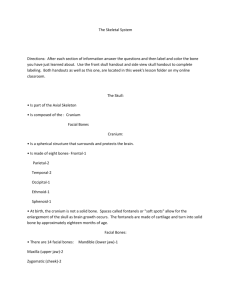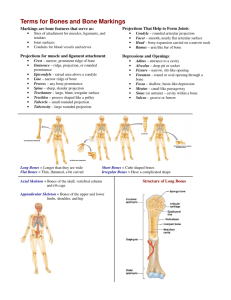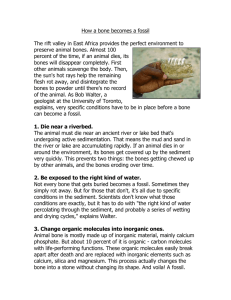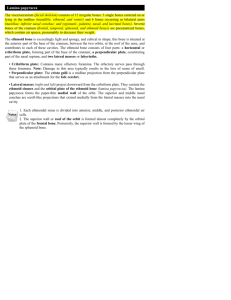I) Skull bones and bone markings f09
advertisement
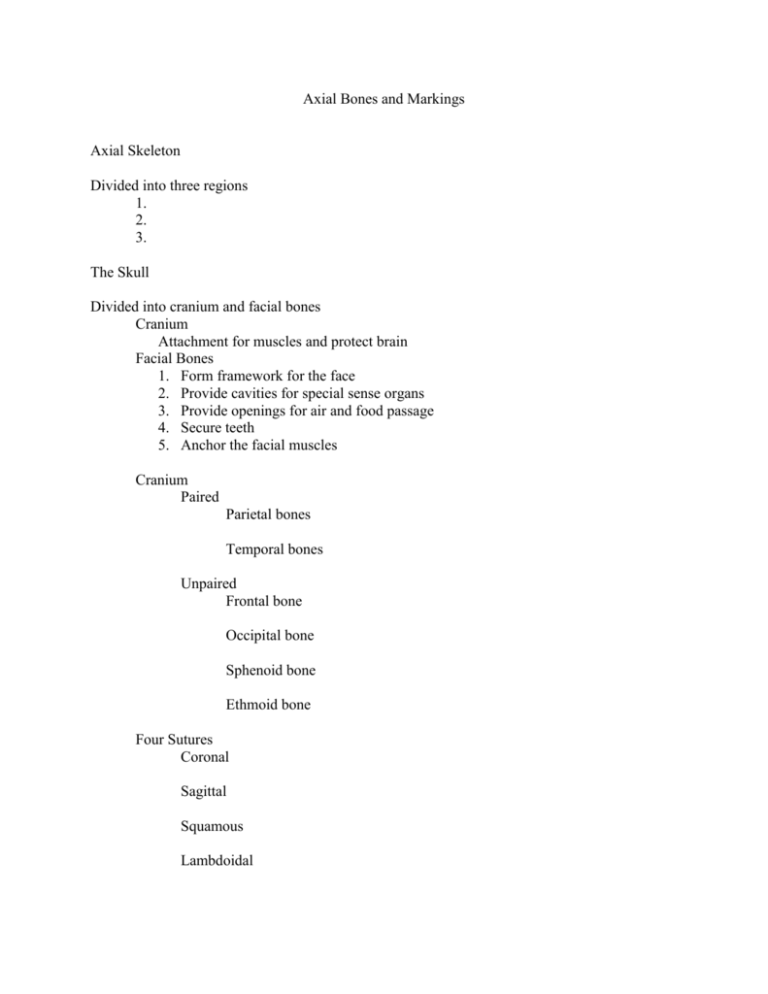
Axial Bones and Markings Axial Skeleton Divided into three regions 1. 2. 3. The Skull Divided into cranium and facial bones Cranium Attachment for muscles and protect brain Facial Bones 1. Form framework for the face 2. Provide cavities for special sense organs 3. Provide openings for air and food passage 4. Secure teeth 5. Anchor the facial muscles Cranium Paired Parietal bones Temporal bones Unpaired Frontal bone Occipital bone Sphenoid bone Ethmoid bone Four Sutures Coronal Sagittal Squamous Lambdoidal Facial Bones Mandible (lower jaw) Vomer Maxillae Zygomatic Nasal Palatine Bone Markings External auditory meatus Styloid process Zygomatic process Mastoid process Mandibular Ramus Foramen magnum Occipital condyle Paranasal Sinuses Five skull bones contain the sinus cavities Functions of sinuses \ Color each of the bones a different color and label them appropriately. Outline and label the three sutures on the skulls below and list the fourth below. Make sure you know the markings as well. Label the following bones, markings and sutures on the following diagrams. Cranium Bones Facial Bones Sutures Bone Markings Sinus Cavities Frontal Parietal Temporal Occipital Ethmoid Sphenoid Maxillae Zygomatic Nasal Mandible Palantines Vomer Sagittal Coronal Squamous Lambdoid External auditory meatus Styloid process Occipital condyle Zygomatic process Mastoid process Mandibular ramus Foramen magnum Frontal Ethmoid Sphenoid Maxillary

